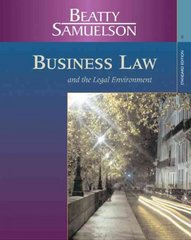Scenario 4 1 3 Suppose that Am; = and Acorn = . Both capital and labor are freely mobile across 4 4 sectors but are immobile across countries. Assume that Tic = 1 in all countries and sectors. (60 Suppose that the preference parameter S is such that autarky relative prices in Canada CAN = l and pMEX = x/i respectively. What is the relative price of and Mexico are p T 1" 2 capital to labor, rc/wc, in each country c under autarky? (15 points) Now suppose that Canada and Mexico open to free trade with each other. How would you expect the relative price of capital to labor, rC/wc, in each country c to change after opening to trade (i.e. would the relative factor price in each country c increase, decrease, or stay the same)? Why do relative factor incomes change in this way? Explain clearly the economic reasoning behind your answer. (10 points) What is the value of the preference parameter S that is consistent with the autarky relative prices in part (a)? (Note: This is a hard question and is intended as a bonus. You should not attempt to solve this until you have completed all other parts of this exam.) (5 points) There are two countries, Canada (CAN) and Mexico (MEX). Consumers in both coun- tries have identical preferences over two goods, oil and corn, with utility given by: c c S C 13 U = (Coil) (acorn) where 0;; and 0:0,.\" denote consumption of oil and corn respectively in country c. The parameter S E (0, 1) indicates how much consumers like oil relative to corn. We will denote the prices of oil and corn by p0,; and 3960,.\" respectively, with p, E pas/{pm denoting the relative price of oil to corn. Each country is also endowed with stocks of two productive factors, capital (K) and labor (L), which are owned by consumers. Endowments of capital and labor are: EGAN = 10' EGAN = 5 RMEX = 2' EMEX = 8 We will denote the prices of capital and labor by 'r and w respectively. In country c E {CAN , MEX} and sector 2' E {0% com}, production uses the following Cobb-Douglas tech- nology: X: = T: (K:)1'*' (L:)"* where Xf, Kf, and LE denote output, capital input, and labor input respectively in sector 15 in country c. All output is produced under perfect competition. Note that the parameter Tf allows for productivity dierences across both countries c and sectors 2', while the parameter A, allows for differences in factor intensities across sectors. Below, you will consider four scenarios that differ in terms of how mobile factors are across sectors and in terms of the parameters {3,119, A,} of the utility and production functions. Treat each scenario independently. Each scenario has questions that are worth 30 points in total, for a grand total of 120 points. Answer all questions








